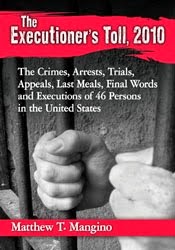People who
have been stunned with Tasers may be unable to understand Miranda warnings -
and more likely to waive their rights or even give false confessions -
according to the Philadelphia Inquirer
The study,
the first randomized controlled trial of the weapons outside of manufacturer
Taser International, found the 50,000-volt shocks significantly impair brain
function in the short term.
"People
who have just recently been tased run the risk of talking to police without the
benefits of counsel and not understanding the consequences," said Drexel
criminology and justice studies Professor Robert Kane. It was published this
month in the journal Criminology and Public Policy.
Kane said the
study makes the case for a nationwide policy requiring police to wait an hour
after using a Taser on a suspect before interrogating him.
Kane, 48, who
came to Drexel from Arizona State University in 2012, began the work after he
and his colleagues heard about lawyers in the Phoenix area seeking to suppress
clients' confessions. Kane collaborated with Arizona State University professors
Michael White and Justin Ready on the research.
The lawyers
in Arizona were arguing that their clients, having been stunned with Tasers, were
unable to "knowingly, intelligently and voluntarily" waive their
rights. That's the standard outlined in Miranda v. Arizona, the 1966
Supreme Court decision that held people must be advised of their constitutional
rights to silence and to a lawyer before questioning.
With funding
from the federal National Institute of Justice, the criminologists recruited
142 healthy individuals, mostly college students, who were willing to be
Tasered, all in the interests of science.
Half were
shocked; a subgroup underwent physical exertion before the shock, just as a
suspect would be likely to have struggled with police.
Individuals
who received the jolt performed worse on verbal learning tests and reported
difficulty concentrating, elevated anxiety and feeling overwhelmed.
"People
who get tased look a lot like 78-year-olds suffering from mild cognitive
impairment and, in some cases, even patients with dementia," Kane said. On
average, the effects subsided within an hour, though in some cases, it took up
to a week.
Bradley
Bridge, an assistant defender at the Defender Association of Philadelphia, said
he'd be sharing the research with colleagues.
"This is
new, and very troubling. It raises significant problems in terms of how the
judicial system would deal with these issues," he said.
It could be
grounds to argue that a defendant's waiver of rights was not knowing and
voluntary - and that a confession must be thrown out. The question is likely to
be litigated, he said.
A spokesman
for the Philadelphia District Attorney's Office declined to comment on the
potential
Kane thinks
the one-hour waiting period for questioning would be the best practice.
Police might
argue that such a rule would prevent them from obtaining timely information, he
said. But he dismissed that argument, noting the Supreme Court has already made
exceptions to Miranda in cases where an immediate interrogation is necessary to
resolve a threat to public safety.
Furthermore,
Kane noted, his study might not even give the full picture of how Tasers impact
mental function.
"We
would expect 'typical' suspects - who may be drunk, high, or mentally ill and
in crisis at the time of exposure - to experience even greater
impairment," the study authors noted.
The study,
which used five-second Taser exposures, also does not explore the effects on
people who are Tased multiple times.
That's not
uncommon, said David Rudovsky, a civil rights lawyer and University of
Pennsylvania law professor.
"Tasers
are often overused. People get re-tased, often, several times," he said.








